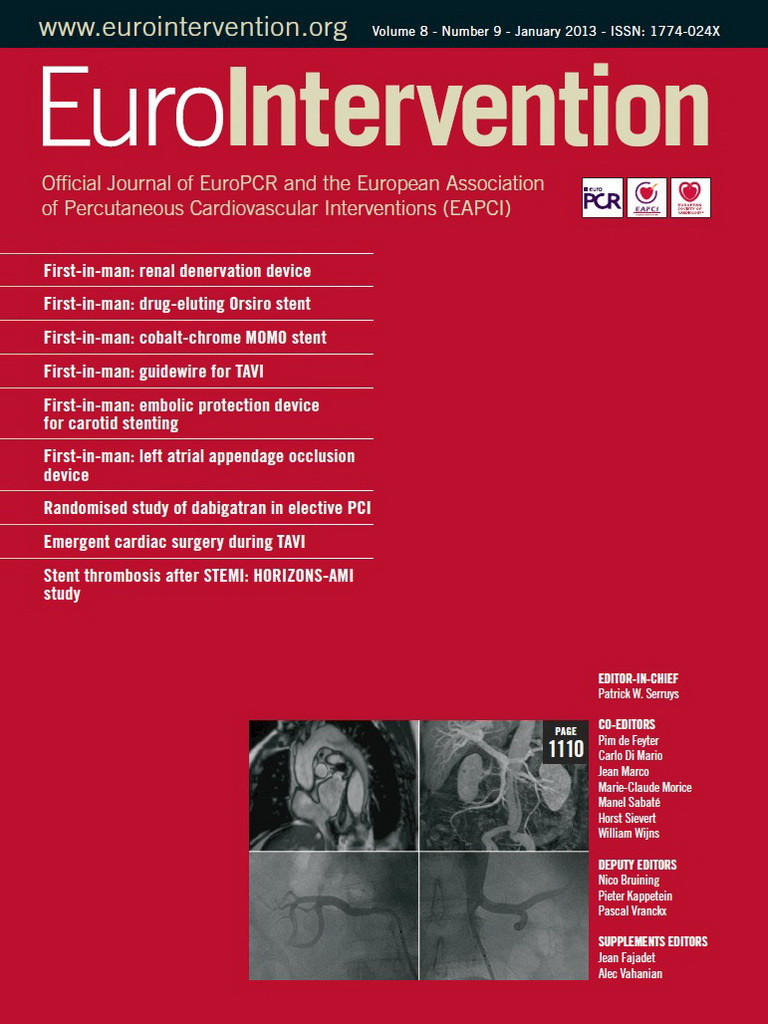Together we created EuroIntervention –together, the editorial board and I, our back-office staff, graphists and publisher, the reviewers and readers, and above all you the authors who chose – even before we had a reputation– to submit your papers to us. This confidence in what we would become made our work all the more important and our task easier as the quality of what you wrote and your support of our journal gave us a remarkably high Impact Factor for a speciality publication.
Today, because of your support and the work we have accomplished together we are faced with an even greater challenge, and one which we can succeed in rising to if we all accept our responsibilities and respond to it effectively.
In short, to avoid being a victim of our own success and to keep up the standards, we are faced with an increasingly complex dilemma: how to publish all the worthy articles that are submitted to us? Since our Impact Factor –and even before– we have seen an exponential rise in submissions…since December 2011 these have risen by 50%. However, a journal is a physical reality with only a limited amount of space, and we simply do not have the room to publish every paper. This is where we stand today, and this is why we are turning to you again, as we did when we began to rise to the challenge of this new reality we are facing.
This first challenge: to publish or not to publish?
Today it is clear: we can only accept 20 to 25% of the papers that are submitted to EuroIntervention. How can you, as a submitting author, ensure that your paper will be favourably considered – and published – in a timely fashion?
We begin at the beginning with the simplest, and yet most fundamental of points…Read the authors’ instructions! This may seem obvious, but it is amazing how our zeal in presenting an idea can get the better of us. Form and style are crucial to first impressions – in our work and in the acceptance of a paper: 5,000 words (tables, legends and references included), that’s all we accept– that is all we can accept– so prepare your paper accordingly. Some journals will not consider a paper that does not meet their style standards. Until now we have trusted you, but if you seek a favourable response consider our restraints as well, and follow the authors’ instructions…so we are not forced to return your paper for these least important of reasons.
The three questions: Novelty? Interest? Relevance?
It may seem obvious, but again, take a moment to ask yourself the three questions that not only help to focus your approach to writing, but ensure the interest we will have in your paper when it arrives.
NOVELTY
Is my paper unique? Am I presenting a first-in-man procedure? Has the topic I am approaching been written about before? Remember, be honest with yourselves, because we will have to be with you!
INTEREST
If your topic has been dealt with before, what is the incremental value of my manuscript? Am I presenting a larger case series and /or longer-term follow-up or have I approached the subject using new technological modalities such as imaging techniques that have not been applied here before?
RELEVANCE
What is the central message that I wish to present here? What is the clinical relevance? Is my paper hypothesis-generating? What is my methodological approach? Am I creating a “prospective” rather than “retrospective” work, creating data, or simply exploring existing data through a meta-analysis? Randomised clinical trial? Is this a multicentre rather than a single-centre study?
The reviewing process
As you consider these points, remember all aspects of the content of your submission: each part should be of the same high quality or the whole will suffer, and you will find yourself –if you are lucky and are not rejected upfront– in a cycle of answering reviewers and revision. With the continuing influx of papers and the rise in the quality and perception of EuroIntervention our reviewing process has also become more refined. All aspects of what you present interest us as much as they should interest you, so even –and especially– the use of statistics, so valuable, and so easily misused, misquoted or misunderstood has come under specific focus with the creation of a dedicated statistical editorial board concentrating on both methodology and epidemiology.
In conclusion, we need your continued support and we want you to continue to submit your papers to EuroIntervention…but, to have your paper accepted, it needs to meet the same high standards that made you turn to us in the first place. Today, if you submit a paper that does not meet your strict standards or ours, we will have no choice but to decline the publication.
As we said before, this is a two-way street: if you appreciate us, and the hurdles we overcame to create a journal that is now a world-recognised reference in interventional medicine, then your paper should meet the same high standards to be published here. It is your choice and your challenge and we invite you to accept it. Send us your best work, join our on-going odyssey, and we will be proud to publish you.

